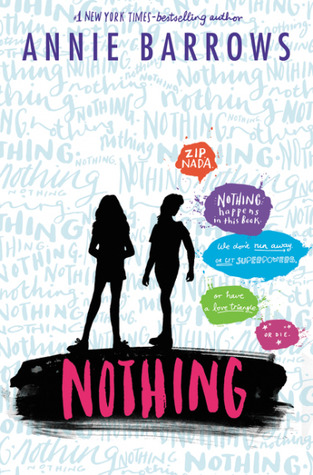"Did you see her?"
That was the first thing Kevin said to me on the first day
of school, eleventh grade. We were waiting for the bell to ring.
"See who?" I said.
"Hah!" He craned his neck, scanning the mob. He
had witnessed something remarkable; it showed on his face. He grinned, still
scanning. "You'll know" (p. 3).
He's talking about the new girl.
The new girl at Mica High is different. There's no other way
to describe her. That's what Leo thinks. At first.
She brings a pet rat to school, she wears weird things like
kimonos and Indian buckskins, she brings a ukulele to school and sings
"Happy Birthday" to people. She wears no makeup. And she calls
herself "Stargirl." The students have never seen anyone like her
before. Everyone loves her. She's not one of the beautiful ones, but still
she becomes the most popular and beloved student at Mica High.
And Leo finds himself in love. Not in love with the
beautiful girl, or the smart girl, or the artist, or the actress. He loves
Stargirl, not for her popularity but for her difference -- for who she is on
the inside.
Then she's turned on. Shunned. Hated for her differences.
Like a new toy that first you love because it's fun and new, but then
quickly get bored of, then ignore, then start to despise, the kids at the
school start giving her the silent treatment. One of
the "popular" girls threatens to drop her pet rat down
the stairwell. But she doesn't let them get to her; she sill not let them
make her feel bad.
Leo, however, does feel bad. He is worried for her. He is
also worried for himself -- what will others think of him for hanging out
with her? (Classic teenage boy behavior, right?) He begs her to be "normal," to become like all the
other girls. Blend in more; act like everyone else. For a little while, she
does.
Then, Stargirl disappears.
This isn't the end. Will she return? And if so, in what
form? Will she stay the way she has always been? Or will she stay
"normal?"
Stargirl celebrates the individuality of each and every
person, all the while showing what happens when one person wants to be
different, while the others want conformity. Stargirl would be a great read for
9+, for any kids -- especially girls -- who feel that pressure and don't
know how to respond to it.
Stargirl among the Mica High students is like a flower among
the grass, or a cactus in the barren desert. Stargirl is the flower, she
doesn't let the others steal her beauty. Not for long, anyway.
Everyone talks about being normal, but when everyone is an
individual, normal isn't a thing.
------------------------------------
Daddy’s afterthoughts: I don’t want to spoil the ending, but if you
are familiar with Nathaniel Hawthorne’s “The Birthmark,” there are some
parallels to the character of Georgianna. The arguably mad scientist Aylmer tries
to use his alchemical wizardry to make his already remarkable wife Georgianna “perfect,”
not realizing that when he succeeds, she becomes too good, too angel-like, to
continue to exist on earth with the rest of us imperfect mortal fools, and so she is
forced to depart. Perhaps, too, Steven King’s The Green Mile, in the character
of John Coffey, who despite being misunderstood and even hated, gives his goodness
to the world to the last, right up until he is executed for a crime he did not
commit (whoops, spoilers). Even touches, perhaps, of Mary Poppins (the movie version of her, anyway), who
comes, works her magic, and then, sensing the change in the winds, realizes it is time for her to go.
Stargirl is a mysterious, inexplicable character who comes, and then goes, and
leaves a legacy of memories. But is it just a legacy of memories? Or a legacy
of memories and the accompanying lessons that leave the world a better place than
when she first comes to town? Does her presence have a net positive impact on the
community? And after she goes, does she stay away forever? This book is a
glorious YA parable, and I would recommend it even for adults.



